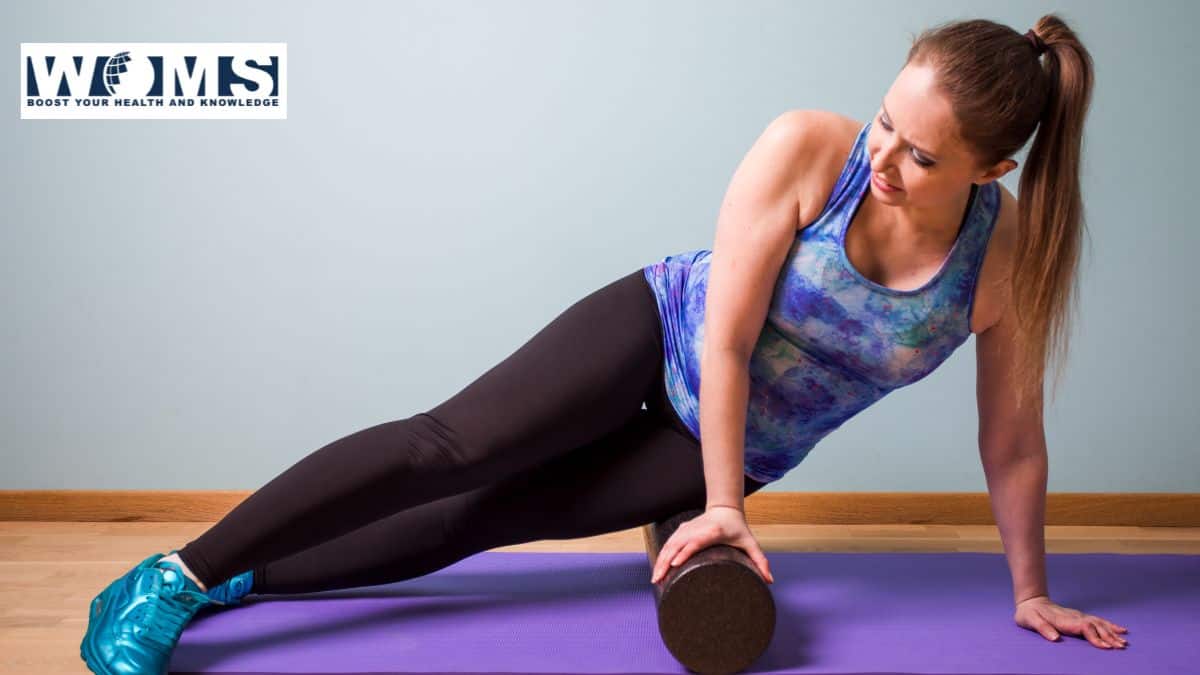Why You Need to Foam Roll Before and After Your Workouts

Foam rolling has become increasingly popular within the fitness community due to its recognized benefits in improving athletic performance, facilitating muscle recovery, and reducing the risk of injuries. This straightforward yet highly effective self-myofascial release technique utilizes a foam roller to exert pressure on precise body areas, addressing muscle tightness and trigger points. By integrating foam rolling into your pre and post-workout regimen, you can experience a multitude of advantages that contribute to a more efficient pursuit of your fitness objectives and the maintenance of optimal physical well-being.
In this blog post, we will explore why foam rolling is essential both before and after your workouts, delving into the science behind its benefits and providing practical tips for incorporating it into your fitness regimen.
Understanding the Science of Foam Rolling
To appreciate the importance of foam rolling, it is crucial to understand the underlying science. Our muscles are enveloped in a web-like connective tissue called fascia, which can become tight and restricted due to various factors such as exercise, poor posture, or repetitive movements. This tightness leads to muscle imbalances, decreased range of motion, and increased risk of injuries. Foam rolling targets these areas of tightness and trigger points, applying pressure to release tension in the fascia and restore optimal muscle function.
Additionally, foam rolling stimulates the sensory receptors in our muscles, tendons, and ligaments, triggering a relaxation response in the nervous system. This response helps reduce muscle tension, improves circulation, and promotes nutrient and oxygen delivery to the muscles. By enhancing blood flow and nutrient exchange, foam rolling aids in the removal of metabolic waste products, reducing post-workout soreness and promoting faster recovery.
Pre-Workout Foam Rolling Benefits
Incorporating foam rolling into your pre-workout routine offers several advantages that can enhance your performance during exercise:
a. Increased Range of Motion: Foam rolling targets muscle tightness and adhesions, promoting improved flexibility and joint mobility. By releasing tension in the muscles, foam rolling allows for a greater range of motion during exercises, enabling better form and technique.
b. Enhanced Muscle Activation: Foam rolling activates the muscles being targeted, increasing their readiness for exercise. This heightened muscle activation improves muscle recruitment and can lead to improved strength and power output during workouts.
c. Injury Prevention: Regular foam rolling helps identify and alleviate muscle imbalances and tightness, reducing the risk of injuries. By addressing these issues beforehand, you can ensure that your body is adequately prepared for the demands of your workout.
d. Mental Preparation: Foam rolling provides an opportunity for mental focus and preparation before exercise. This practice can help you center your mind, enhance body awareness, and create a positive mindset for your workout session.
Post-Workout Foam Rolling Benefits
The advantages of foam rolling extend beyond pre-workout preparation, proving equally valuable in the post-workout phase:
a. Muscle Recovery: After intense exercise, muscles can become tight, fatigued, and prone to inflammation. Foam rolling post-workout helps expedite the recovery process by reducing muscle soreness and promoting muscle repair. The release of tension in the fascia enhances blood flow, facilitating the removal of metabolic waste products and supplying vital nutrients to the muscles. This is also referred to as DOMS.
b. Decreased Delayed Onset Muscle Soreness (DOMS): Foam rolling aids in alleviating DOMS, the muscle soreness experienced in the 24 to 72 hours following intense exercise. By reducing muscle tension and increasing blood flow, foam rolling helps flush out the metabolic byproducts responsible for DOMS, allowing for a quicker recovery and reducing discomfort.
c. Improved Flexibility and Relaxation: Regular foam rolling sessions after workouts contribute to long-term improvements in flexibility. As the muscles release tension and tightness, the range of motion in joints increases, leading to improved flexibility over time. Moreover, the rhythmic rolling motion and pressure applied during foam rolling have a calming effect on the nervous system, promoting relaxation and reducing stress levels post-workout.
d. Injury Rehabilitation: Foam rolling can also be beneficial for individuals recovering from injuries. By gently targeting the affected muscles and surrounding areas, foam rolling helps break down scar tissue, improves circulation, and aids in the healing process. It can be an effective complement to other forms of rehabilitation and physical therapy.
Practical Tips for Effective Foam Rolling
To maximize the benefits of foam rolling, consider the following tips:
a. Warm-up: Prior to foam rolling, engage in a light warm-up to increase blood flow to the muscles and prepare them for the upcoming activity.
b. Target Specific Areas: Identify the muscle groups that require attention and focus on rolling those areas. Target rolling the hamstrings, quadriceps, calves, glutes, and upper back.
c. Technique: Apply moderate pressure to the foam roller and slowly roll along the targeted muscle group. When you encounter a tender spot or trigger point, pause and apply sustained pressure for 20-30 seconds until you feel the tension release.
d. Breathe and Relax: During foam rolling, take slow, deep breaths to help relax the muscles and enhance the effectiveness of the technique.
e. Frequency: Incorporate foam rolling into your routine regularly. Aim for at least 5-10 minutes of foam rolling before and after workouts to experience the maximum benefits.
f. Combine with Stretching: Foam rolling can be complemented with stretching exercises to further improve flexibility and range of motion. Follow up foam rolling with dynamic or static stretching to maximize the benefits.
g. Seek Professional Guidance: If you are new to foam rolling or have specific concerns or injuries, consult with a fitness professional or physical therapist. They can provide personalized guidance and recommend specific foam rolling techniques tailored to your needs.
Conclusion
Foam rolling is a highly effective self-care tool that offers numerous benefits for individuals of all fitness levels. By incorporating foam rolling into your pre and post-workout routine, you can optimize performance, prevent injuries, and promote faster recovery. Through its impact on muscle relaxation, increased range of motion, enhanced circulation, and reduced muscle soreness, foam rolling serves as an invaluable addition to any fitness regimen. Make foam rolling a consistent practice, and reap the rewards of improved athletic performance, increased flexibility, and overall physical well-being.
Remember, always listen to your body, start with gentle pressure, and gradually increase intensity as your muscles adapt. Embrace the foam roller as your fitness ally and unlock the incredible potential it holds for your pre and post-workout routine.




